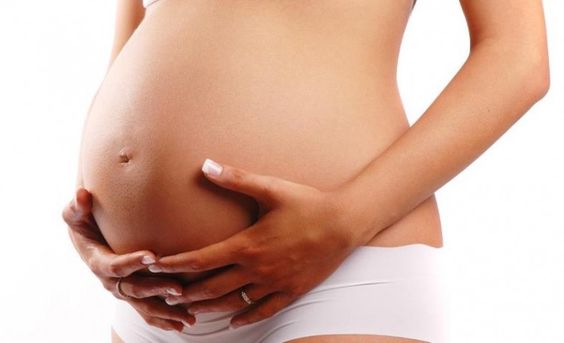How to Calculate the Date of Conception

Calculating the date of conception is rather complicated. However, knowing this information is very valuable.
Gestational age is known as the period that covers all of conception. The process begins on the first day of your last menstruation.
Specialists believe that it’s very hard to determine the exact date of conception. In order to estimate the date, the age of the baby and an inexact day is taken into account.
For a more precise approximation, menstruation is used. After a period, ovulation begins either late or early.
There is a natural average to calculate your ovulation date. It should happen in the first 15 days after your period. But ovulation can happen on the 9th, 11th, 14th or 16th day, the timing isn’t known.
Specialists usually suggest that we should have in mind 6 days around the ovulation date. If a mother knows her cycle, it’s easier to get closer to the date.
However, even with this method, there can be a considerable margin of error. In this article we’ll describe other mechanisms to calculate the date of conception.
Calculate the date of conception
Like we previously stated, the main index to calculate the conception date is the date of the mother’s last menstruation.
This calculation allows us to know the gestational age although it doesn’t tell us the precise date that conception occurred.
A woman who has a regular cycle can allow for more concrete details. However, this can still fail in certain occasions. In order to find out the date, other methods can be used. Take the following examples.
Ultrasounds
With as little as 5 weeks after a woman’s last period, the embryo can be measured. In order to perform this measurement, the ultrasound can be divided in specific fractions.
All babies have the same measurements in the first weeks no matter what their final weight and measurements will be. That’s why age approximation is so precise when it’s done in the first 18 weeks.
This method is useful when dealing with a woman whose menstrual cycle is irregular. It also helps clear up doubts when a woman is confused due to bleeding.
Some women confuse implantation bleeding for menstruation. This makes them think they’re not pregnant. Ultrasounds are never wrong.
Typical date estimation
In the case of a normal pregnancy in a woman with a regular menstrual cycle, it’s most common for conception to occur between the first 11–21 days after the last period.
We know that the exact date of ovulation is difficult to determine. That’s why this stays as an estimation.
Growth of the baby
The growth of the baby can be a double-edged mechanism to find out the baby’s age.
Measurements of the baby are usually similar according to the gestational age, however, unusual growth can occur. The baby may be smaller or larger than average.
“Having a baby is like falling in love again, as much with your husband as with your child” – anonymous.
There are situations when the size of the uterus (height) doesn’t correspond with the date of the last menstruation.
However, the evolution of the pregnancy is a great indicator to find out the date of conception. It’s also useful to estimate when the birth will be.

Exact conception date
In most cases, the exact conception date is unknown. This is due to circumstances previously mentioned. However, it’s possible to find out the exact gestational age.
When a woman receives artificial insemination procedures, the exact date of conception can even be determined ahead of time.
Some special cases allow for the knowledge of a bit more precise details. Of course there is still mystery surrounding conception.
Even with the development of special techniques, ovulation tests and other methods, we’re still far from knowing when the magical moment of conception occurs.
All cited sources were thoroughly reviewed by our team to ensure their quality, reliability, currency, and validity. The bibliography of this article was considered reliable and of academic or scientific accuracy.
- Al-Taee, H., & J Edan, B. (2018). Estimation of Day-Specific Probabilities of Conception during Natural Cycle in Women from Babylon. International Journal of Fertility and Sterility, 11(4), 314-317. https://www.ijfs.ir/article_45453.html
- Cálculo de Concepción. (2020). American Pregnancy Association. Consultado el 4 de mayo del 2023. https://americanpregnancy.org/es/getting-pregnant/calculating-conception/
- Stirnemann, J., Samson, A., Bernard, J., & Thalabard, J. (2013). Day-specific probabilities of conception in fertile cycles resulting in spontaneous pregnancies. Human Reproduction, 28(4), 1110–1116. https://pubmed.ncbi.nlm.nih.gov/23340057/
- Casas-Patiño, D., Rodríguez–Torres, A., Galeana-Castillo, C., Quiroz, I., & Reséndiz, F. (2012). Ultrasonido en el primer trimestre del embarazo 10 consideraciones básicas. Revista Médica del Instituto Mexicano de Seguro Social, 50(5), 497-504. https://www.medigraphic.com/cgi-bin/new/resumen.cgi?IDARTICULO=38727
- Murcia, J., & Esparza, M. (2011). La ventana de la fertilidad y marcadores biológicos:
revisión y análisis en ciclos ovulatorios normales. Persona y Bioética, 15(2), 149-165. http://www.scielo.org.co/scielo.php?script=sci_abstract&pid=S0123-31222011000200004&lng=e&nrm=iso&tlng=es - Pimiento, L, & Beltrán, M. (2015). Restricción del crecimiento intrauterino: una aproximación al diagnóstico, seguimiento y manejo. Revista chilena de obstetricia y ginecología, 80(6), 493-502. https://www.scielo.cl/scielo.php?script=sci_arttext&pid=S0717-75262015000600010#
- Gómez-Gómez, M., Danglot-Banck, C., Aceves-Gómez, M. (2012). Clasificación de los niños recién nacidos. Revista Mexicana de Pediatría, 79(1), 32-39. https://www.medigraphic.com/cgi-bin/new/resumen.cgi?IDARTICULO=35186
- Pettker, M., Goldberg, J., El-Sayed, Y., Copel, J. (2017). Committee opinion no 700: Methods for estimating the due date: Methods for estimating the due date. Obstetrics and Gynecology, 129(5), e150–e154. https://journals.lww.com/greenjournal/Fulltext/2017/05000/Committee_Opinion_No_700__Methods_for_Estimating.50.aspx
This text is provided for informational purposes only and does not replace consultation with a professional. If in doubt, consult your specialist.



